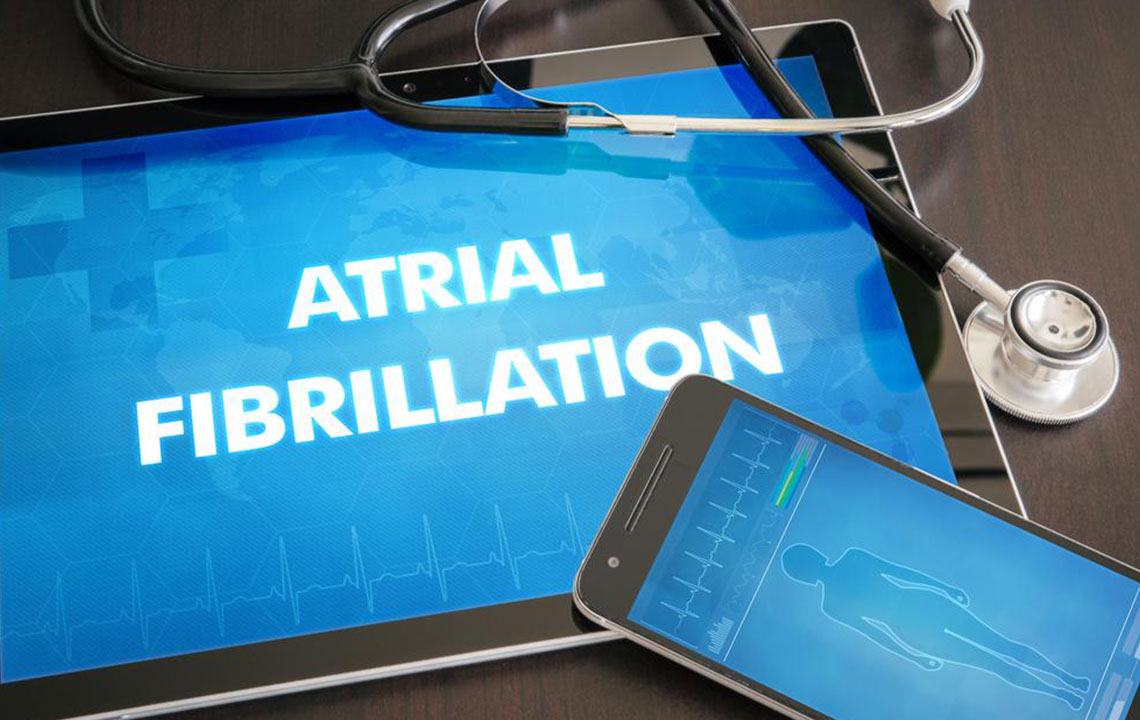All You Need To Know About Atrial Fibrillation

As long as the heart has rhythmic heartbeats and the pulse remains within the normal range, there are no issues. A healthy heart ensures that all the organs and organ systems receive their share of blood flow.
Atrial fibrillation is a condition that is characterized by irregular and rapid heart beat, which increases the risk of stroke, heart attack and other heart related complications. When a person suffers from atrial fibrillation, the heart beat can raise upto 100 to 175 beats per minute, compared to the normal 60 to 100 beats per minute.
The heart is divided into upper chamber and lower chamber. When the upper chamber, the atria is not in coordination with the lower chamber, the ventricles, atrial fibrillation occurs. Though not a life-endangering situation, atrial fibrillation is a serious medical condition that may require emergency treatment.
Symptoms
Some people may not have any symptoms, and the condition is usually revealed only after a physical examination. Those who exhibit symptoms can experience any of the following.
Chest pain, palpitations, shortness of breath, fatigue, weakness, difficulty in exercising, confusion, dizziness, lightheadedness.
Frequency Of Atrial Fibrillation
Atrial fibrillation may be occasional, where symptoms subside on their own, and last for a few minutes to a couple of hours. Medically this condition is known as Paroxysmal Atrial Fibrillation. Some people experience persistent atrial fibrillation, where the heart does not get back to its regular rhythm on its own. Treatment such as medications and electrical shock needs to be administered to help the heart get back its regular rhythm.
Some people suffer from prolonged atrial fibrillation, where the symptoms are continuous and last for more than a year. There are a few who have this medical condition as a permanent fixture. That is, their heart continues to beat abnormally. In such conditions, medication needs to be taken on a continuous basis, to keep the heart rate in check..
Identifiable Causes
The most common cause for atrial fibrillation is an abnormality in the heart, or a damage to the structure of the heart. Other possible causes for atrial fibrillation include:
- Coronary heart disease
- High blood pressure
- Incidence of heart attack
- Congenital heart defects
- Metabolic imbalance, like an overactive thyroid
- Abnormal heart valves
- Lung diseases
- Sleep apnea
- Viral infections
- Sick sinus syndrome
- Exposure to stimulants like caffeine, tobacco and certain medications
- Previous heat surgeries, if any
- Stress due to pneumonia or other illness
Risk Factors
Listed below are factors that can increase the risk of suffering from atrial fibrillation
- Age has a great impact on developing atrial fibrillation. As you get older, the risk gets higher.
- Any history of heart disease like coronary heart disease, heart valve problems, or a previous heart attack can trigger atrial fibrillation.
- High blood pressure can increasing the risk.
- Being obese is the highest risk factor for developing atrial fibrillation.
- Binge drinking exponentially puts you at an great risk.
- Other chronic health conditions like—diabetes, thyroid disorder, sleep apnea, lung disease and metabolic syndrome increase the risk of atrial fibrillation.
- If there is a family history of atrial fibrillation, the risk is greater.
Health Complications
Though atrial fibrillation is not a life-threatening condition, it can at sometimes lead to stroke and heart failure.
The rapid and chaotic heart rate can weaken the heart and ultimately lead to heart failure. Also as the blood pools into the atria, there is a chance for blood clots to be formed. These blood clots can eventually move to the brain, and cause a stroke.
Diagnosing Atrial Fibrillation
If you exhibit any of the symptoms mentioned above, or susceptible to any of the risk factors, there are certain diagnostic tests and procedures to find out if it’s a case of atrial fibrillation.
ECG, blood tests, chest X-ray, echocardiogram, stress test and holter monitor, can help doctors arrive at conclusion and start treatment.
Treatment
Treatment is based on the severity of the symptoms, and the extent of atrial fibrillation which could be occasional, persistent or permanent. Treatment involves three stages—Resetting the rhythm, controlling the heart rate, preventing the formation of blood clots and reducing the risk of stroke.
For mild cases, cardioversion procedure is used to reset the rhythm of the heart. Either through electrical shock or drugs, the rhythm is restored back to normal. Intravenous or oral antiarrhythmics drugs are used to treat the condition. The medication has to be continued to prevent further complications. Beta blockers have to be taken to control heart rate.
If cardioversion and medications do not help to restore the heart rhythm, catheter and surgical procedures are the next best alternative.
It’s best to consult a doctor at the first sign of chest pain which could sometimes be fatal. The heart is a vital organ and needs extra care. Any symptom related to the heart, needs to be given high priority.


